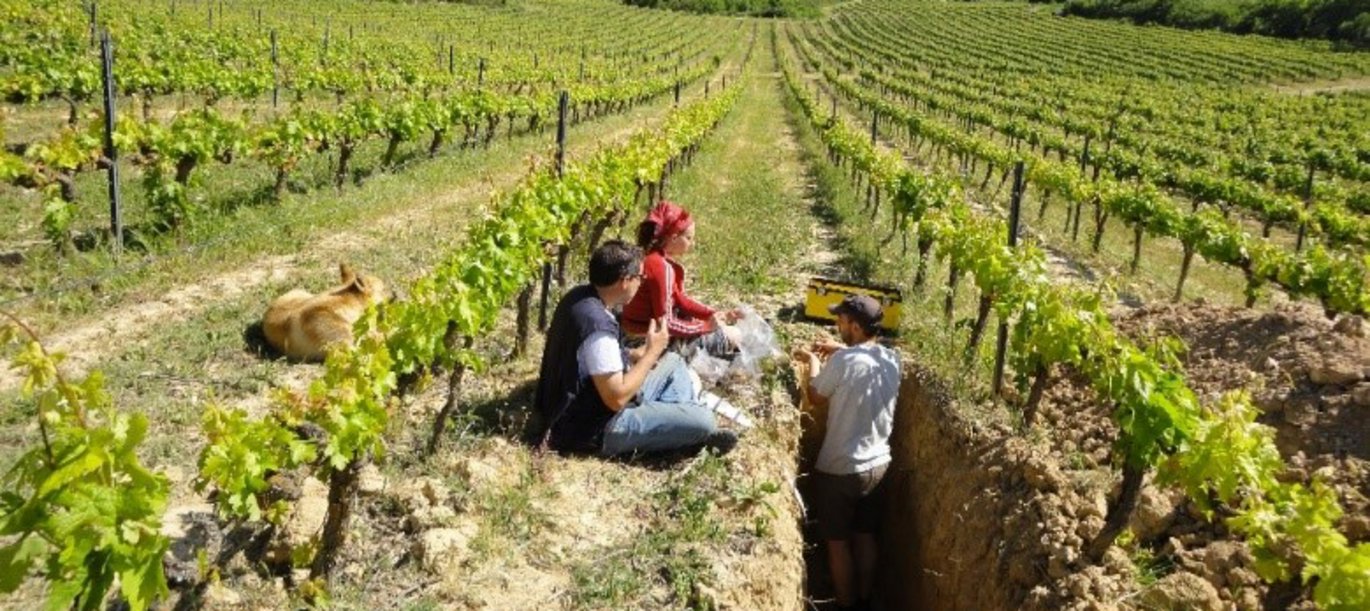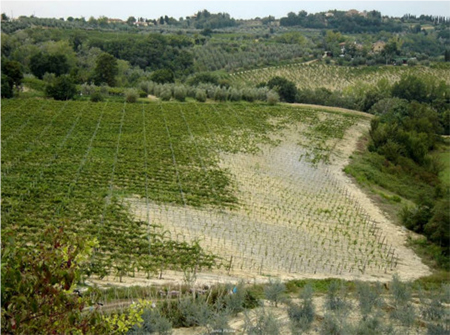Restoring soil functionality in vineyards: an interview with ReSolVe project coordinator
Organic vineyards in Europe may suffer from reduced soil fertility, water retention capacity and soil biodiversity. The ReSolVe project (Restoring optimal Soil fertility in degraded areas within organic Vineyards), which ran from 2015 to 2018, aimed to identify management measures which can significantly improve organic vineyard production.

ReSolVe aimed to improve organic vineyard production in terms of (1) physical, chemical and biological soil quality (2) plant health, growth and performance, and (3) grape yield and quality. I sat down with the project coordinator, Edoardo Costantini, to discuss the project and its results.
Question: Why is soil degradation such a big issue in organic viticulture?
Answer: We found that there are several gaps in knowledge. Usually, the farmer deals with the canopy. Sometimes, the farmer looks at the soil surface. However, for tree crops, the most important part is what is going on below ground. This is often a “black box” for farmers. They know that there are problems; they can see the impacts. There are instances where the whole vineyard is affected by soil malfunction, but they do not know how to deal with the problem.
Q: What are the major causes of soil malfunction?
A: We investigated different causes of soil malfunction and found that the biggest limitations are: available water capacity (15 out of 19 instances), compaction (13/19), rooting depth (12/19), nitrogen content (12/19) and soil organic carbon depletion (12/19).

A vineyard in Tuscany with varied soil conditions. Photo: Paolo Bazzoffi, 2010
Q: What can farmers do to address soil fertility issues in vineyards?
A: We tested various treatments for two years to address the different causes we identified. Based on these results, we developed Guidelines for soil restoration techniques in vineyards. These guidelines are available in several languages and include selected strategies – compost fertilization, green manure and dry mulching with perennial legumes – to recover soil functionality in degraded areas. Farmers can implement these strategies to improve soil functionality.

Compost spreading in autumn. Photo: Priori, 2016
Q: How do the guidelines work in practice?
A: The guidelines outline how to implement the basic strategies as well as what outcomes were observed for each strategy. For green manure and dry mulching with perennial legumes, the guidelines also indicate the effects that were observed on soil fertility with different manure/dry mulch crops. For example, field bean green manure was more effective in increasing nitrogen than Brassicaceae green manure, but less effective in increasing stable organic matter.
The guidelines, therefore, allow farmers to implement the strategies according to their local conditions, and fine-tune the strategies in terms of seed quantity, selection of species, adapting to local conditions, as well as soil and climatic condition.
In order to ensure the guidelines were as practical as possible, we worked with farmers (rather than experimental fields) to get more realistic results that take farmers’ time and priorities into account. So the guidelines are very practical.
Ideally, these guidelines would also be used by private and public advisors and implemented face-to-face with farmers. With face-to-face relationships, we can really put into practice what we have done.
Q: Is this research also relevant for conventional farmers?
A: Yes. We have also worked with people who tried to implement organic farming and then gave it up. If you are working on very degraded soil, it is much easier to apply chemical fertilizer; you immediately have a response. The guidelines also address this. They take mineral nutrition into account, not just physical and hydrological properties of soil. So, you know that by selecting one crop or another, you can improve, for instance, nitrogen input or carbon input and not just improve soil structure or physical properties.
Q: What do you think the next steps are for improving soil fertility in organic vineyards?
A: The ReSolVe project took an important first step by identifying strategies to restore degraded soil. However, I think there are further steps that can be taken, such as:
- Developing and testing additional organic strategies to restore soil fertility, both at and below the surface.
- Combining organic and precision farming, leading to a “precise organic farming” approach.
- Developing strategies to avoid soil degradation before vineyard plantation, rather than restoring it once soil is already degraded.
For more information, project coordinator
Edoardo Costantini (CREA)
+39 0552492251
edoardo.costantini@crea.gov.it